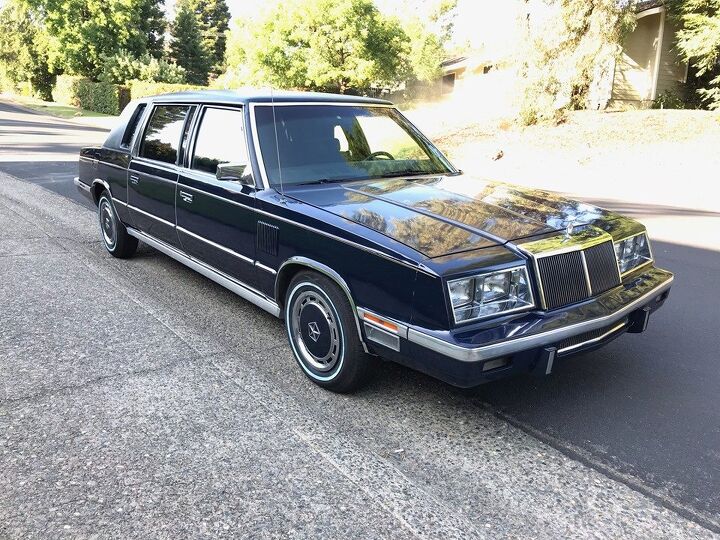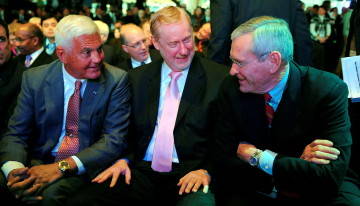#executive
Ford Design Exits and Entrances
Ford design leader Moray Callum is taking his pen and going home.
Rare Rides: Be a Real Businessman With the 1983 Chrysler Executive Sedan
The demand for executive limousines in North America was once satisfied by OEM-lengthened versions of domestic sedans. The Detroit Three built them in-house, or sent regular cars to a domestic coach builder. The lengthened cars were then sold via the regular dealership network. The desired buyer was a wealthy customer who’d have a driver for their daily conveyance. By the Eighties, the limousine market shifted in favor of coming with length: Stretch limousines were in demand. Independent companies built super-extended wheelbase cars for livery-type needs. The factory limousine car market faded away as business magnates chose standard sedans, or long-wheelbase offerings that were not limousines.
But there were one or two holdouts in the factory limousine marketplace, and today’s Rare Ride is one such car. It’s the Chrysler Executive from 1983.
Nissan Exec: Uber, Not Tesla, a Bigger Threat
John Martin, Nissan North America’s senior vice president of manufacturing and supply chain management, had some harsh words for Tesla on Friday. According to him, Uber — not Tesla — is the real disruptor, and what Tesla is doing now is relatively easy, Automotive News reported.
“Lot’s of people are calling Tesla a disrupter. They are not,” he said while arguing that building a performance vehicle that’s priced over $100,000 is much easier than manufacturing an electric car for under $30,000.
And what about Apple and Google? Martin doesn’t foresee either of them getting into the auto manufacturing business anytime soon.
GM's Post-Lutz Planning Reshuffle: Fewer Reviews, More Market Research
Doubtless somewhat shocked and surprised about GM Chairman/CEO/Non-Car-Guy Ed Whitacre’s decision to take over product planning responsibilities, Automotive News [sub] did some digging into the decision, and offers a full report. According to AN’s GM sources, the decision comes down to one fundamental goal: holding lower-tier executives accountable for decision making. By reducing executive reviews of forthcoming vehicles by one third, or about four times per development cycle, lower-level executives and engineers will have more freedom to make decisions, and will spend more time developing and less time preparing data for executive reviews. And lest you think this decision doesn’t merit your attention, consider this: though GM’s bureaucracy had created incredibly long lead times, most automakers hold about ten executive reviews per new product. By cutting to four, GM is taking something of a step into the unknown.




















Recent Comments